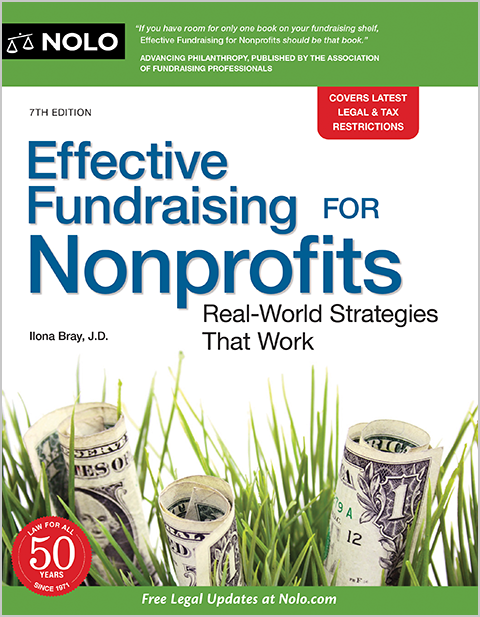Online Fundraising: Effective Digital Campaigns for Nonprofit Success
Online Fundraising: Effective Digital Campaigns for Nonprofit Success
Blog Article
The Function of Neighborhood Involvement in Nonprofit Fundraising: Structure Lasting Relationships for Sustainable Assistance
Community interaction is progressively recognized as a crucial element of successful not-for-profit fundraising. The approaches and methods utilized to involve communities vary extensively, increasing essential inquiries concerning effectiveness and effect.
Understanding Community Involvement
Community engagement is an essential component of effective not-for-profit fundraising initiatives. It refers to the strategies and activities that organizations utilize to get in touch with their regional areas, promoting partnerships that are mutually helpful. Recognizing area engagement includes acknowledging its multifaceted nature, that includes engagement, collaboration, and outreach. Nonprofits should recognize vital stakeholders-- such as neighborhood participants, local organizations, and various other organizations-- to produce efficient engagement strategies.
Effective neighborhood involvement is asserted on active listening and responsiveness to the demands and passions of the neighborhood. This procedure includes getting responses, comprehending community dynamics, and making sure that the organization's goal lines up with neighborhood priorities. Involving the neighborhood can take numerous types, including public conferences, volunteer chances, and partnership campaigns, each designed to urge involvement and investment in the organization's objectives.
Furthermore, neighborhood interaction should be come close to as an ongoing dialogue instead than a single effort. By promoting a comprehensive setting where area voices are listened to and valued, nonprofits can construct a strong structure for future fundraising undertakings. Eventually, a deep understanding of area interaction empowers companies to create authentic links that improve their overall performance and sustainability.
Advantages of Strong Relationships
Strong relationships developed via area engagement return various benefits for nonprofit fundraising initiatives. Firstly, these relationships foster count on and credibility, vital elements in motivating benefactors to add. When possible fans see a nonprofit proactively entailed in their area, they are more most likely to rely on its mission and effect.

Additionally, these relationships help with efficient communication. Nonprofits can leverage their connections to share tales of effect, updates, and requires, making certain that advocates remain informed and involved. This open line of communication not only reinforces bonds however likewise urges referral promo, increasing the not-for-profit's reach.
Last but not least, strong area connections can attract new partners and sponsors. People and businesses are more likely to line up with companies that show purposeful community participation, supplying added resources and support that can considerably enhance fundraising capabilities. Thus, cultivating durable relationships via community interaction is indispensable to a not-for-profit's long-term fundraising success.
Techniques for Efficient Involvement
How can nonprofits effectively engage their neighborhoods to improve fundraising efforts? Establishing targeted strategies is important for cultivating purposeful links. Initially, leveraging social media sites platforms makes it possible for organizations to share their goal dynamically and interactively, reaching a more comprehensive audience. Regular updates, engaging web content, and calls-to-action can galvanize area passion and involvement.
2nd, organizing area occasions, such as workshops, volunteer chances, or fundraising drives, promotes in person interaction, enabling nonprofits to display their influence and initiatives. These occasions not only elevate funds but additionally grow relationships and permit area members to engage straight with the reason.
Third, applying individualized interaction approaches can improve interaction. Customizing messages to specific contributor sectors based on rate of interests and past payments promotes a sense of belonging and financial investment in the company's goal.
Lastly, developing collaborations with local organizations and area leaders can intensify outreach initiatives. Joint efforts can improve exposure and trustworthiness, showing a collective commitment to the neighborhood's health. By incorporating these techniques, nonprofits can develop long lasting connections that enhance fundraising efforts and drive sustainable assistance.
Determining Engagement Success
While engaging the neighborhood is crucial for successful not-for-profit fundraising, gauging the efficiency of these involvement initiatives is similarly important. Establishing clear metrics allows organizations to examine exactly how well they are linking with their target market and accomplishing their fundraising goals. Secret performance signs (KPIs) such as contributor retention rates, volunteer engagement levels, and involvement on social media sites systems provide substantial data for assessment.

Regularly evaluating these metrics allows organizations to pivot their methods when essential, making certain that area interaction continues to be straightened with their total mission. In addition, sharing these results with stakeholders fosters transparency and develops trust, motivating additional area participation. Ultimately, a robust measurement important site structure not just informs future fundraising efforts yet additionally strengthens the relationship between the nonprofit and its advocates, preparing for lasting success.
Case Research Studies in Community Influence
Various study highlight the extensive influence that community involvement can have on nonprofit fundraising success. One remarkable instance is the "Something to chew on" campaign, where a local food bank partnered with institutions and businesses to host community suppers. These occasions not just raised funds have a peek at this site yet likewise promoted a sense of belonging among participants, considerably raising contributor retention rates.
Another compelling instance is the "Environment-friendly Spaces Job," which included local residents in the revitalization of urban parks. This campaign not only amassed financial assistance from local organizations but also grew a volunteer base that added to continuous upkeep and programming. The sense of possession and satisfaction among area participants translated into continual contributions.
In the realm of arts, the "Art for All" project successfully engaged regional musicians and customers to develop joint art setups, bring about boosted exposure and donations for a regional arts not-for-profit.
These examples highlight that when nonprofits focus on neighborhood participation, they can develop long lasting partnerships that boost fundraising initiatives, making certain lasting assistance and fostering a vivid area society. Such cases demonstrate that area interaction is not just an approach but a necessary pillar of nonprofit success.
Final Thought
In verdict, area engagement is integral to the success of not-for-profit fundraising initiatives. By cultivating solid connections with regional stakeholders, companies enhance trust and credibility, bring about improved contributor retention and loyalty. Implementing efficient engagement techniques and gauging their effect ensures that nonprofits can flourish and adjust. Ultimately, a durable foundation of community support not only magnifies fundraising possible however additionally grows a society of cooperation, important for accomplishing long-term organizational goals and sustaining purposeful influence.
Nonprofits need to identify key stakeholders-- such as area participants, regional companies, and various other companies-- to create reliable interaction strategies.

In conclusion, area interaction is integral to you can look here the success of not-for-profit fundraising efforts.
Report this page